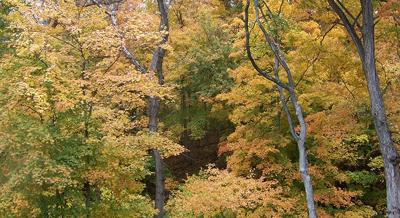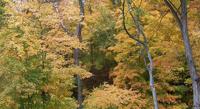Whether or not the weather agrees, the first day of autumn arrives this weekend. The signs of summer slipping away are making themselves obvious with each passing sunrise and sunset.
The spinning of planet Earth and its revolving around the sun are the most constant factors in the change of seasons. Soon Old Sol will begin spending more time below the horizon than above and our nights will be longer than our days until next spring.
As a result of the diminishing daily sunlight, the deciduous trees in our yards and forests are beginning to make less chlorophyll, allowing colors other than green to show through. Some of the earliest turners have already started the transition, and you can begin to see yellow and other shades among the tree leaves.
While not as clockwork-reliable as the sun, the changing colors will break out in the coming weeks, and the state Department of Conservation provides a way for residents to track observations made by professionals from Maryville to New Madrid and Kahoka to Carthage. The differences in peak color timing between the northern and southern state boundaries can be significant.
“Our weekly fall color updates are a great resource for the public,” said Russell Hinnah, state supervisor for forestry field programs. “Foresters begin posting reports in mid-September that show users where trees are beginning to turn and even suggest great places to see changing leaves.”
The online tracker is available at mdc.mo.gov/fallcolor. The updates include information on which tree and brush species are displaying the most color in eight different regions of the state. The link gets updated each week until November.
In addition to the difference based on changes in latitude, other factors can affect the timing, duration and vibrancy of the fall color show.
“The dry conditions we saw this summer could cause trees to lose their leaves early or begin changing colors earlier than normal,” Hinnah said. “This may affect the amount of fall color we see later in the season.”
Chilly evenings are critical for leaves to change color.
“Sugars produced by photosynthesis are trapped inside leaves by the cool autumn nights,” Hinnah explained. “Those sugars are the building blocks for the rich red, yellow, orange, and purple pigments. Chilly nights cause the breakdown of green pigments, allowing the fall colors to show through.”
Sassafras, sumac, and Virginia creeper are some of the earliest to change in mid-September. In late September, black gum, bittersweet, and dogwood are turning, he said. The most spectacular show of fall color usually hits around mid-October.
“Trees like maple, ash, oak, and hickory are at the peak of their fall display by the middle of October,” Hinnah noted. “Normally by the end of the month, colors are fading and leaves are falling.”
Fall colors are on display everywhere in the state, but locations for optimal viewing include river and stream corridors, forested bluffs, and high ridges overlooking vast wooded landscapes.
“MDC conservation areas or Missouri state parks are wonderful places to take in the fall color,” Hinnah said.
John Winkelman has been writing about outdoors news and issues in Jefferson County for more than 30 years and is the Associate Editor for Outdoor Guide Magazine. If you have story ideas for the Leader outdoor news page, e-mail ogmjohnw@aol.com, and you can find more outdoor news and updates at johnjwink.com.




